Status of quake-stricken reactors at Fukushima nuclear power plants Full list at link:
The following is the known status as of Friday night of each of the six reactors at the Fukushima Daiichi nuclear power plant and the four reactors at the Fukushima Daini plant, both in Fukushima Prefecture, which were crippled by the magnitude 9.0 earthquake and the ensuing tsunami on March 11.
Reactor No. 1 - Operation suspended after quake, cooling failure, partial melting of core, vapor vented, building housing reactor damaged March 12 by hydrogen explosion, roof blown off, seawater being pumped in.
Reactor No. 3 - Operation suspended after quake, cooling failure, partial melting of core feared, vapor vented, seawater being pumped in, building housing reactor badly damaged Monday by hydrogen explosion, high-level radiation measured nearby on Tuesday, plume of smoke observed Wednesday and presumed to have come from spent-fuel storage pool, seawater dumped over pool by helicopter on Thursday, water sprayed at it from ground on Thursday and Friday.
Reactor No. 4 - Under maintenance when quake struck, no fuel rods in reactor core, temperature in spent-fuel storage pool reached 84 C on Monday, fire Tuesday possibly caused by hydrogen explosion at pool holding spent fuel rods, fire observed Wednesday at building housing reactor, pool water level feared receding, renewed nuclear chain reaction feared, only frame remains of reactor building roof.
Live Radiation Monitoring from West LA on USTREAM (Video stream)
Japan Raises Nuclear Severity Level (Video)
Full Core Meltdown in Japan? From Rense.com
Possibly it's ongoing and concealed. All along, Japanese and Tokyo Electric (TEPCO) officials downplayed or lied about the severity of the crisis. Virtually nothing they say can be believed.
Nor from the Obama administration, budgeting loan guarantees for new reactor construction instead of decommissioning all 104 nuclear plants because operating them risks full core meltdowns. Partial or full ones gravely harm earth, air, water and food. Three hazardous Fukushima radioactive isotopes are especially problematic. University of Rochester Professor Jacqueline Williams, a radiation expert, says ingesting radioactive iodine-131 causes thyroid and other cancers. So does hazardous beta and gamma radiation from Cesium-137. Released Strontium 90 also causes leukemia and other cancers. Large amounts of all three are spewing daily.
Under a worst case scenario, millions of Japanese, Pacific rim and northern hemisphere people will be harmed, many gravely. Millions of deaths may result. The dangers of nuclear power can't be overstated. Potentially, all planetary life is threatened. What better reason to end all commercial and military use now.
Japan lays power cable in race to stop radiation From Sympatico.
Exhausted engineers attached a power cable to the outside of Japan's tsunami-crippled nuclear station on Saturday in a race to prevent deadly radiation from an accident now rated at least as bad as America's Three Mile Island in 1979.
..
"If they can get those electric pumps on and they can start pushing that water successfully up the core, quite slowly so you don't cause any brittle failure, they should be able to get it under control in the next couple of days," said Laurence Williams, of Britain's University of Central Lancashire.
If not, there is an option of last resort under consideration to bury the sprawling 40-year-old plant in sand and concrete to prevent a catastrophic radiation release.
That method was used to seal huge leakages from the 1986 Chernobyl disaster.
Nuke engineer: Fuel rod fire at Fukushima reactor “would be like Chernobyl on steroids”
We’d be lucky if we only had to worry about the spent fuel rods from a single holding pool. We’re not that lucky. The Fukushima Daiichi plant has seven pools for spent fuel rods. Six of these are (or were) located at the top of six reactor buildings. One “common pool” is at ground level in a separate building. Each “reactor top” pool holds 3450 fuel rod assemblies. The common pool holds 6291 fuel rod assemblies. [The common pool has windows on one wall which were almost certainly destroyed by the tsunami.] Each assembly holds sixty-three fuel rods. This means the Fukushima Daiichi plant may contain over 600,000 spent fuel rods.
So when people say the situation isn't serious, they're either ignorant, in denial, unable to comprehend the enormity of the unfolding situation, or flat out lying to you.
The moment nuclear plant chief WEPT as Japanese finally admit that radiation leak is serious enough to kill people From The Daily Mail..
The boss of the company behind the devastated Japanese nuclear reactor today broke down in tears - as his country finally acknowledged the radiation spewing from the over-heating reactors and fuel rods was enough to kill some citizens.
After Tokyo Electric Power Company Managing Director Akio Komiri cried as he left a conference to brief journalists on the situation at Fukushima, a senior Japanese minister also admitted that the country was overwhelmed by the scale of the tsunami and nuclear crisis.
He said officials should have admitted earlier how serious the radiation leaks were.
Chief Cabinet Secretary Yukio Edano said: 'The unprecedented scale of the earthquake and tsunami that struck Japan, frankly speaking, were among many things that happened that had not been anticipated under our disaster management contingency plans.
'In hindsight, we could have moved a little quicker in assessing the situation and coordinating all that information and provided it faster.'
As "frank" as this "disclosure" is, it's got to be sooo much worse..
The following is the known status as of Friday night of each of the six reactors at the Fukushima Daiichi nuclear power plant and the four reactors at the Fukushima Daini plant, both in Fukushima Prefecture, which were crippled by the magnitude 9.0 earthquake and the ensuing tsunami on March 11.
Reactor No. 1 - Operation suspended after quake, cooling failure, partial melting of core, vapor vented, building housing reactor damaged March 12 by hydrogen explosion, roof blown off, seawater being pumped in.
Reactor No. 3 - Operation suspended after quake, cooling failure, partial melting of core feared, vapor vented, seawater being pumped in, building housing reactor badly damaged Monday by hydrogen explosion, high-level radiation measured nearby on Tuesday, plume of smoke observed Wednesday and presumed to have come from spent-fuel storage pool, seawater dumped over pool by helicopter on Thursday, water sprayed at it from ground on Thursday and Friday.
Reactor No. 4 - Under maintenance when quake struck, no fuel rods in reactor core, temperature in spent-fuel storage pool reached 84 C on Monday, fire Tuesday possibly caused by hydrogen explosion at pool holding spent fuel rods, fire observed Wednesday at building housing reactor, pool water level feared receding, renewed nuclear chain reaction feared, only frame remains of reactor building roof.
Live Radiation Monitoring from West LA on USTREAM (Video stream)
Japan Raises Nuclear Severity Level (Video)
Full Core Meltdown in Japan? From Rense.com
Possibly it's ongoing and concealed. All along, Japanese and Tokyo Electric (TEPCO) officials downplayed or lied about the severity of the crisis. Virtually nothing they say can be believed.
Nor from the Obama administration, budgeting loan guarantees for new reactor construction instead of decommissioning all 104 nuclear plants because operating them risks full core meltdowns. Partial or full ones gravely harm earth, air, water and food. Three hazardous Fukushima radioactive isotopes are especially problematic. University of Rochester Professor Jacqueline Williams, a radiation expert, says ingesting radioactive iodine-131 causes thyroid and other cancers. So does hazardous beta and gamma radiation from Cesium-137. Released Strontium 90 also causes leukemia and other cancers. Large amounts of all three are spewing daily.
Under a worst case scenario, millions of Japanese, Pacific rim and northern hemisphere people will be harmed, many gravely. Millions of deaths may result. The dangers of nuclear power can't be overstated. Potentially, all planetary life is threatened. What better reason to end all commercial and military use now.
Japan lays power cable in race to stop radiation From Sympatico.
Exhausted engineers attached a power cable to the outside of Japan's tsunami-crippled nuclear station on Saturday in a race to prevent deadly radiation from an accident now rated at least as bad as America's Three Mile Island in 1979.
..
"If they can get those electric pumps on and they can start pushing that water successfully up the core, quite slowly so you don't cause any brittle failure, they should be able to get it under control in the next couple of days," said Laurence Williams, of Britain's University of Central Lancashire.
If not, there is an option of last resort under consideration to bury the sprawling 40-year-old plant in sand and concrete to prevent a catastrophic radiation release.
That method was used to seal huge leakages from the 1986 Chernobyl disaster.
Nuke engineer: Fuel rod fire at Fukushima reactor “would be like Chernobyl on steroids”
We’d be lucky if we only had to worry about the spent fuel rods from a single holding pool. We’re not that lucky. The Fukushima Daiichi plant has seven pools for spent fuel rods. Six of these are (or were) located at the top of six reactor buildings. One “common pool” is at ground level in a separate building. Each “reactor top” pool holds 3450 fuel rod assemblies. The common pool holds 6291 fuel rod assemblies. [The common pool has windows on one wall which were almost certainly destroyed by the tsunami.] Each assembly holds sixty-three fuel rods. This means the Fukushima Daiichi plant may contain over 600,000 spent fuel rods.
So when people say the situation isn't serious, they're either ignorant, in denial, unable to comprehend the enormity of the unfolding situation, or flat out lying to you.
The moment nuclear plant chief WEPT as Japanese finally admit that radiation leak is serious enough to kill people From The Daily Mail..
The boss of the company behind the devastated Japanese nuclear reactor today broke down in tears - as his country finally acknowledged the radiation spewing from the over-heating reactors and fuel rods was enough to kill some citizens.
After Tokyo Electric Power Company Managing Director Akio Komiri cried as he left a conference to brief journalists on the situation at Fukushima, a senior Japanese minister also admitted that the country was overwhelmed by the scale of the tsunami and nuclear crisis.
He said officials should have admitted earlier how serious the radiation leaks were.
Chief Cabinet Secretary Yukio Edano said: 'The unprecedented scale of the earthquake and tsunami that struck Japan, frankly speaking, were among many things that happened that had not been anticipated under our disaster management contingency plans.
'In hindsight, we could have moved a little quicker in assessing the situation and coordinating all that information and provided it faster.'
As "frank" as this "disclosure" is, it's got to be sooo much worse..










































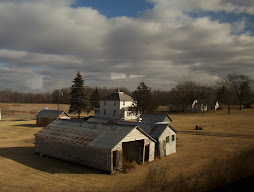




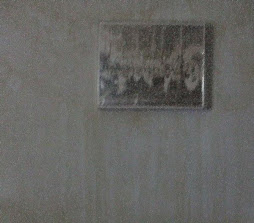






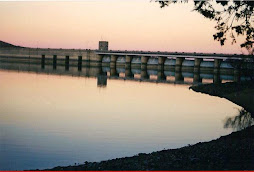







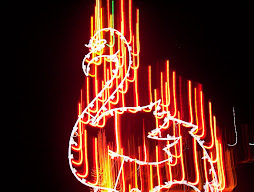




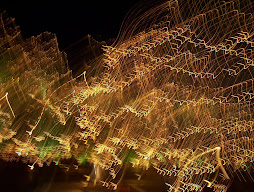

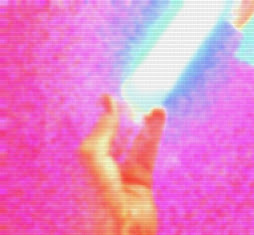
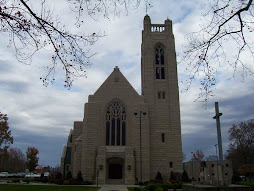










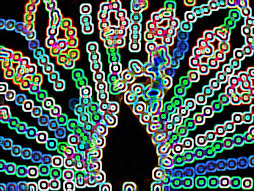









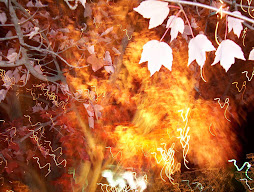









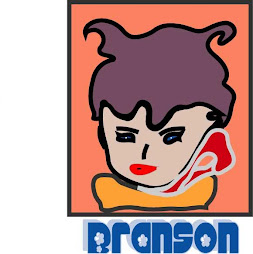



No comments:
Post a Comment